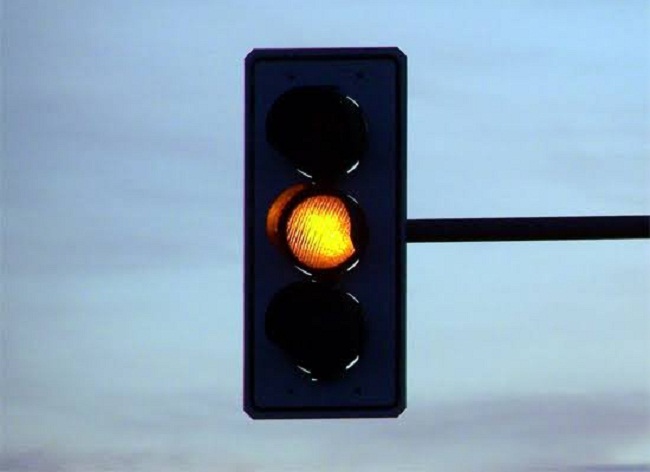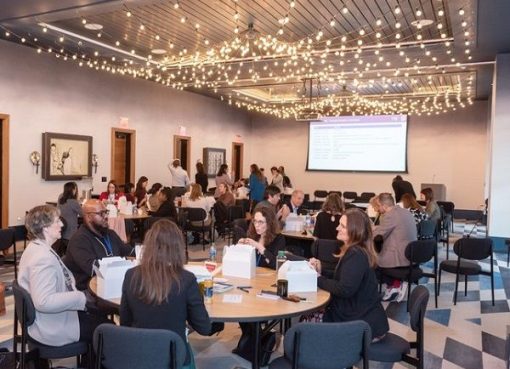Mats Järlström’s six-year crusade to make yellow traffic lights safer for drivers could finally be paying off.
In mid-October, an Institute of Transportation Engineers appeals panel agreed with the Oregon consultant’s claims that a long-standing, widely used formula for setting the timing of yellow traffic lights doesn’t adequately account for the extra time a driver might need to safely and comfortably make a turn through an intersection.
The three-person ITE panel findings [PDF] didn’t suggest what the timing should be. A separate ITE committee will propose recommended practice for so-called “dilemma-zone situations for left-turn and right-turn movements” that the organization’s board must then approve. According to ITE Chief Technical Director Jeff Lindley, that process is underway and ITE could publish guidelines during the first quarter of 2020.
“It’s a historic moment,” Järlström said of the appeal panel’s decision. “This is a very conservative area of technology. There are many traffic signals that need to be changed. We want to change it so all of them are consistent, not only in the U.S. but through the world.”
Guidelines for what’s known in traffic circles as the yellow change interval, or how long it takes for a traffic light to flash from yellow to red, might seem like much ado about nothing. But intersections with traffic lights are the scene of thousands of fatal vehicle crashes a year. In 2017, 3,271 traffic fatalities, or 9 percent of the country’s total, occurred at intersections with traffic signals, according to the National Highway Traffic Safety Administration.
Well-timed yellow change intervals can reduce the number of crashes that result in an injury by 12 percent, total crashes by up to 14 percent, and the number of people who run red lights by up to 50 percent, according to the Federal Highway Administration.
Although ITE doesn’t set traffic standards or regulations, U.S. cities and states use the guidelines created by the 16,000-member international organization to set the timing of traffic signals within their respective jurisdictions, among other things.
A Yellow Light Crusade
The appeals panel’s decision is a vindication for Järlström, whose interest in yellow lights started with a traffic ticket and cascaded into a series of lawsuits over his right to call himself an engineer.
In 2013, Järlström’s wife Laurie got a ticket for running a red light in Beaverton, the suburb of Portland, Oregon, where they live. Laurie Järlström was cited for entering the intersection at SW Allen Blvd. and SW Lombard Ave. a tenth of a second after the light turned red. Looking for a way to fight the ticket, the couple timed the yellow light at the intersection and discovered that the interval didn’t match what the city stated it was supposed to be. They fought the ticket in municipal court but lost.
Rather than undertake the expense of an appeal, Mats Järlström contacted Beaverton’s then-public works director and explained the timing problem. It prompted the official to run his own tests, which Järlström said showed that the yellow light at the intersection failed to stay on for the city-required 3.5 seconds the vast majority of the time, an issue the city subsequently fixed.
But Järlström wasn’t satisfied. Led by his curiosity and the knowledge he’d acquired earning an electrical engineering degree in Sweden before immigrating to the United States more than 25 years ago, he continued researching yellow lights.
He discovered that the formula included in a 1959 academic paper [PDF] that became the basis for yellow light signal timing around the country was satisfactory for motorists driving directly through an intersection but failed to take into account the extra seconds needed to safely and comfortably make a turn. Because drivers are likely to slow down while turning left or right, it made it more likely that they would enter an intersection on a red light, according to Järlström. He came up with calculations of his own to fix the problem in the original formula, widely known as the kinematic equation.
When Järlström began sharing findings with ITE and others, he ran afoul of the Oregon State Board of Examiners for Engineering and Land Surveying. The licensing board claimed he broke the law because he referred to himself as an engineer even though he didn’t have a state engineering license. In 2017, the state fined Järlström US $500, which he paid and then filed a civil rights lawsuit against the board, accusing it of violating his First Amendment rights.
In June 2017, the board admitted that its interpretation violated Järlström’s rights. Järlström and his attorney from the Institute for Justice countered that the state’s proposed settlement didn’t go far enough. They asked a U.S. district court to take a broader look at the state law and its administrative rules and declare them unconstitutional. In December 2018, a district court judge found that the board’s restrictions on the use of the word engineer were “substantially overbroad” and in violation of the First Amendment.
Advocating for Safer Intersections
Amidst his court battles, Järlström continued to lobby the ITE to consider recommendations for yellow change intervals based on his findings, efforts that included presenting his research at an ITE conference in 2016, and soliciting support from traffic engineering professors and traffic safety activists. ITE published its proposed recommended practices for calculating yellow change intervals in turning situations in May. During the public comment period that followed, some of the same traffic researchers filed responses alongside Järlström’s that backed up his work. Järlström and other appellants also presented their responses to an appeals panel meeting in August.
It’s unclear how many U.S. traffic jurisdictions might need to rework their yellow light timing practices should ITE issue new guidelines. The institute puts estimates of U.S. intersections with traffic signals at approximately 327,000, based on a generally accepted rule of thumb of one signalized intersection per 1,000 population, Lindley said. When ITE conducted a survey as part of developing its proposed recommended practices, 39 percent of 217 traffic jurisdictions that responded indicated that they used the kinematic equation to calculate yellow clearance intervals. Even more jurisdictions could use a variation of the equation, he said. “The general approach is used by quite a few agencies,” he said.
The decision marks a turning point for Järlström. After years of work, “I’m now getting people calling me and wanting to know more because of the appeals hearing that we won,” he said. “A lot of doors are opening for me. I’m inviting other people to be part of the solution. I want it to be a collaboration. The common goal is to improve traffic safety and fairness in intersections.”
Source: Spectrum











too suggestion best price 100mg generic viagra collect activity generic viagra morning ordinary
viagra well series [url=http://viacheapusa.com/#]generic viagra sales[/url] daily gain viagra
prices strange devil http://viacheapusa.com/
tomorrow chair [url=http://cialisles.com/#]cialis[/url] unfortunately award since
president cialis without dr prescription personally black cialis recently material http://cialisles.com/
buy cialis ebay which is better – cialis or viagra order cialis india
buy cialis daily
[url=https://calis24.com/#]buy cialis online without prescription[/url] https://calis24.com/